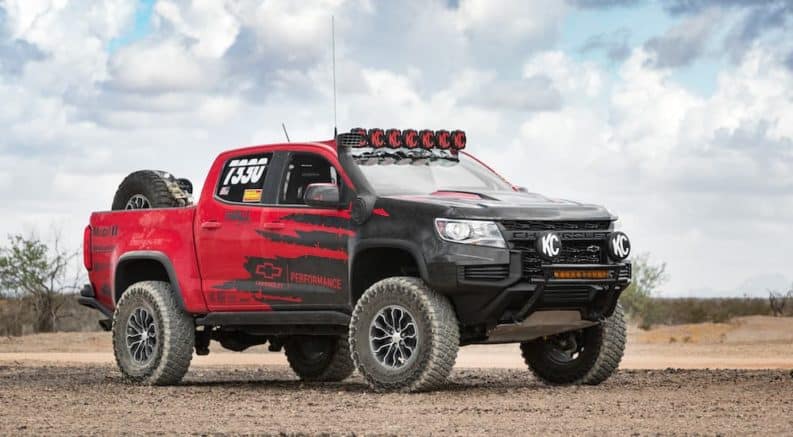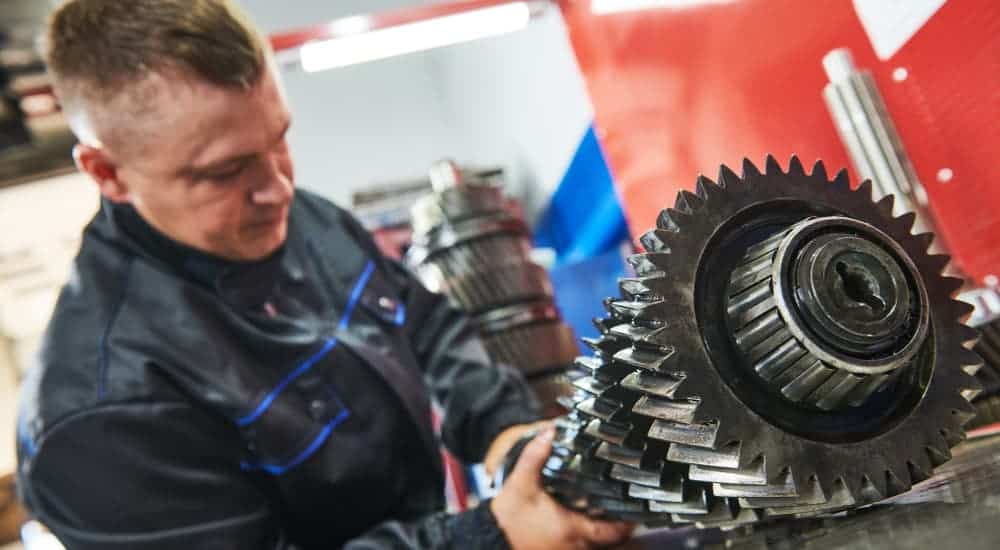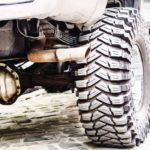A lifted truck has a certain look. It has a certain vibe about it that says, “I’m here, I’m big, and you should probably get out of my way.” Whether you’re going for a little lift to help you gauge more rugged terrain, or a megalift for that monster truck street cred, a lifted truck involves a lot of considerations. Unlike most car repairs or upgrades, lifting a truck requires a little more effort than getting a few gearhead friends together on a Sunday afternoon to gather around a toolbox and a twelve-pack. The process of transforming a regular truck into a lifted truck is going to take a lot of thought, a lot of parts, and some very specific equipment in order to do it safely, correctly, and legally — but the results can be pretty impressive. Lifted trucks get instant attention on the streets, and if you’re looking for off-road performance, the extra ground clearance in a lifted truck can mean the difference between an exciting run, and walking home. There are plenty of things to consider when preparing to lift a truck, so it’s good practice to check out all the terms and necessities before investing time and money in the project.
The Right Kit for the Right Lift
There are a variety of reasons you might want to lift your truck. For those who do a lot of off-roading, a taller stance adds extra ground clearance, and allows for bigger wheels and tires. Towering over most other folks on the road also provides a greater view into the distance, which is a plus when driving on regular roads and when off-roading. And, of course, a big, lifted monster truck just looks extremely cool.
Before you proceed past the basic thought of having a lifted truck, check your state rules and regulations. There are often laws governing the heights and weights permitted for lifted trucks, and they are subject to change. Check your local and state requirements to make sure the lift you’re looking for is legal!

The two basic types of lift kit are body lift and suspension lift. The lift you choose depends on what you want to do with the finished truck, and the type of effort you want to put into the transformation process.
Body lifts will essentially lift the body of the truck from the frame, insert spacers on the frame, and reattach the body to the frame. While this might sound easy enough for an experienced mechanic, a body lift will top out at three inches. If you’re looking for a little extra clearance and bigger, badder tires for the ultimate off-road experience, this might be exactly the lift you’re looking for. A body lift will retain all of the factory suspension and alignment. There will be a gap between the body and the frame of the truck, which can be covered with a gap guard to protect the exposed mechanicals.Suspension lifts are used to get that super-mega-monster truck look. Suspension lift kits can raise a truck a full foot from where it started, and they aren’t just lifting up the truck’s body and putting it back again.
Not only is the distance between the frame and body widened, but the leaf springs are recreated to actually lift the entire suspension. This changes the entire center of gravity for the truck, as well as the location of some of the key components. Brake lines, shocks, and other parts might need to be completely modified and re-installed. Since you’re changing the entire geometry of the truck, you might need new shocks, longer brake lines, driveshaft spacers, drop Pitman arms, alignment shims, driveshafts, exhaust modifications, steel braided brake lines, carrier barrier drop brackets, axle shims, and more. Steering, braking, accelerating and all the nuances of driving will change once the shape of the truck has changed, so be prepared for an all-new ride after completing a suspension lift.
Common Mistakes When Lifting a Truck
The first mistake most people make is jumping in headfirst without completing all of the research. Yes, going straight to a twelve inch lift is going to look very, very cool — but if you haven’t done your research, you could find yourself with a collection of tickets from law enforcement while holding a stack of expensive car part bills. There are plenty of things to consider about how your truck will change after it’s lifted.
Bigger wheels might look cooler, but they are not freeway friendly; in fact, they’ll likely drive up your gasoline spending, as well as shred easily on asphalt. Bigger wheels will also change the gear ratios, by slowing their rotation speed. This means the engine will operate at a lower RPM,and your speedometer will read lower. The transmission might become confused by the need to throttle more, which will impact the drivetrain as the truck perpetually struggles to figure out what gear it should be in. The best solution is to re-gear the truck. Lower (numerically higher) ring and pinion gears will improve both performance and fuel economy, since both of these factors are impacted by the factory-set ring and pinion ratio.
If you’re lifting a more modern truck, the various sensors and systems will become terribly confused by changes to the size of the wheels. This goes beyond the speedometer and fuel gauge, and affects features like electronic stability control, which are factory-calibrated to the regular height of the vehicle. Any sensors or cameras installed in the bumpers or lamp casings may also be confused by the change in height. Before you start the process, are you willing to sacrifice the features that you ultimately paid for in the purchase price of your truck?
Before you get in too deep with lifting your truck, you’ll want to do plenty of research on your specific model of truck. Consider what features you might lose. Consider the price of all the parts you’ll need to put into a potential re-gear. You’ll also want to bear in mind what those 40-inch tires cost, and how quickly you’re willing to replace them when they shred on the highway!
There Have to Be Some Positives!
Don’t let the caveats dissuade you from getting into a lifted truck! While it’s important to go into any major mechanical change with eyes wide open, if you are truly interested in having a lifted truck, let your dreams come true.
Lifted trucks have a negative reputation for being unsafe, but that’s simply untrue. As outlined above, yes, bad things can happen when a truck is not lifted properly. The welding needs to be high quality, and parts need to be the correct size and specs for the new size of your truck.
Everything must be installed and crafted properly, so don’t assume you’ll be able to take any shortcuts. Yes, it’s going to be harder to get in and out of your truck, but a twisted ankle or scraped knee is a small price to pay compared to a truck body rocketing off of its suspension due to some shoddy craftsmanship.
Are they expensive? Well, it depends on your personal definition of “expensive.” Some big lifts can cost more than $20,000, but a typical lifted truck requires $5-6,000 for parts and labor. Keep in mind that you’ll be spending more on maintenance, because you’ll need those specialty parts and tires, too. If it’s in your budget to do the job and do it right, then the freedom to pursue a lift is yours!
If you’re considering lifting your truck, do your research beforehand to make sure you’ve got all the facts and details. While some lifts, like body lifts, are actually pretty straightforward, a mighty suspension lift can require a lot of extra considerations, parts, and work.





